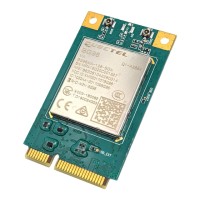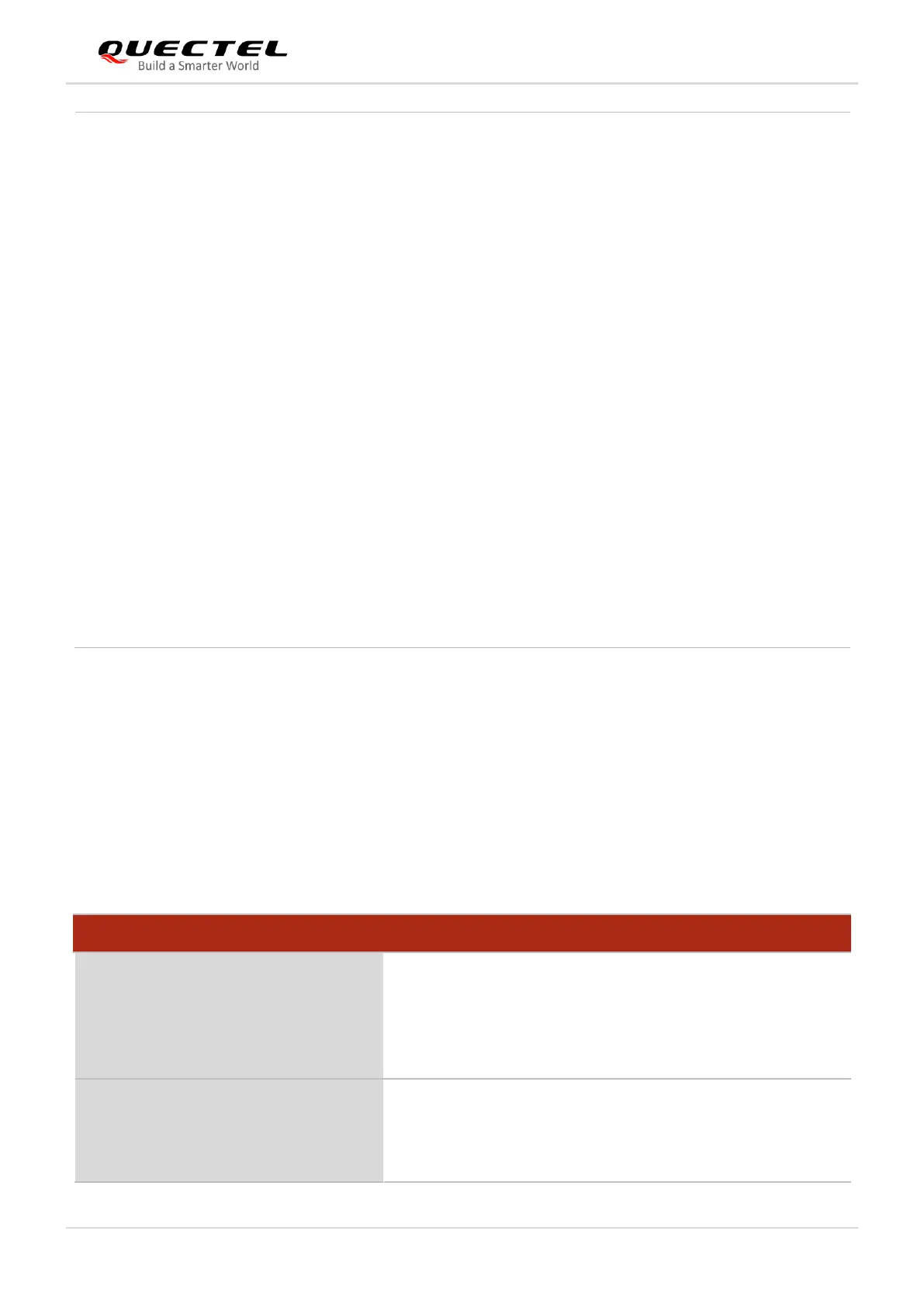LPWA Module Series
BG96 TCP/IP Application Note
BG96_TCP/IP_Application_Note 18 / 52
2.2.7. AT+QISEND Send Data
In buffer access mode (<access_mode>=0) or direct push mode (<access_mode>=1), the data can be
sent via AT+QISEND. If the data is sent to the module successfully, SEND OK will be returned. Otherwise
it will return SEND FAIL or ERROR. SEND FAIL indicates the sending buffer is full and the data can be
tried to be resent. ERROR indicates it encounters an error in the process of sending data and the data
should be delayed for some time to be sent. SEND OK does not mean the data has been sent to the
server successfully. Please query whether the data has reached the server by
AT+QISEND=<connectID>,0.
If <service_type>="TCP" or "UDP", it is the port of remote server.
If <service_type>="TCP LISTENER" or "UDP SERVICE", the port is invalid.
If <service_type>="TCP INCOMING", it is the port of remote client.
<local_port> Integer type. Local port number. Range: 0–65535.
If <local_port> is 0, then the local port is assigned automatically.
<socket_state> Integer type. Socket service status.
0 "Initial": connection has not been established
1 "Opening": client is connecting or server is trying to listen
2 "Connected": client/incoming connection has been established
3 "Listening": server is listening
4 "Closing": connection is closing
<serverID> Integer type. Only valid when <service_type> is "TCP INCOMING". <serverID>
represents which server accepts this TCP incoming connection, and the value is the
same as <connectID> of this server’s "TCP LISTENER".
<access_mode> Integer type. Data access mode.
0 Buffer access mode
1 Direct push mode
2 Transparent access mode
<AT_port> String type. COM port of socket service.
"usbmodem" USB modem port
"usbat" USB AT port
"uart1" UART1 port
Response
+QISEND: (range of supported <connectID>s),(range of
supported <send_length>s)
OK
Write Command
Send variable-length data when
<service_type> is "TCP", "UDP" or
"TCP INCOMING"
Response
>
After the response >, input the data to be sent. Tap Ctrl+Z to
send the data, and tap Esc to cancel the operation.

